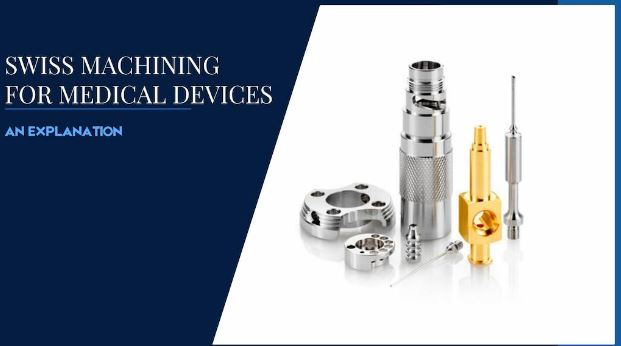Swiss CNC Machining for Medical Devices: Benefits & Uses
Swiss CNC machining produces highly accurate and precise components with small features like micro-holes, cavities, tapering, undercuts, etc. The difference from standard machining processes is that a guide mechanism supports the workpiece, which significantly minimizes the defection and vibration. For medical devices, swiss machines produce different small and medium-sized components with tight tolerances. They are used for the manufacturing of bone screws, dental implants, surgical needles, endoscopic parts, and diverse types of medical device parts.
Furthermore, this article will elaborate on the benefits and applications of CNC Swiss machining technology in the medical industry.
Why Swiss Machining for Medical Manufacturing?
In medical manufacturing CNC machining, extrusion, EDM machining, injection molding, swiss machining, and other various technologies are used. Each of them has unique capabilities and benefits. Especially, swiss machining is used for small and complex parts.
The precision directly influences the medical and patient saftey. So, it is crucial to maintain the exact tolerances than any other industries. Standard CNC machining techniques struggle to achieve tight tolerances and consistency for small components and features due to excessive vibration and misalignment. Here, the Swiss turning and other processes use a “Guide bush” mechanism that facilitates the stability of the workpiece and allows for the machining of micro-geometrical features.
In the image below, you can see how the bushing mechanism supports stability during Swiss machining;
Swiss Machining and Industry Standards
FDA-approved materials and ISO standards for quality control of medical device parts. FDA requirements typically involve the use of bio-compatible material and human safety in Swiss machined parts. Consequently, the Swiss turning, milling, and other operations produce medical parts that are compliant with ISO 13485 and ISO 14971.
- ISO 13485: The quality control of consistent design, production, and mitigation of risk management.
- ISO 14971: It deals with precision compliances (tolerances) in critical medical component production.
Benefits of Swiss Machining for Medical Devices
Swiss CNC machining has significant advantages in medical device manufacturing, especially for the micro-features. For example, it can drill a hole as low as a diameter of 0.254 mm while maintaining tight tolerances of ±0.00254 mm. Consequently, swiss machining operations are flexible and they can handle different medical-grade materials to craft complex geometrical features.
Precision
The computer numerical control and guide bush mechanism ensure the highest precision for each Swiss machine’s medical components. It is directly associated with the equipment’s functionality and medical saftey.
Complex Shapes and Features
Complex shapes and features like small threads, deep undercuts, multi-angle cuts, etc. It is beneficial for the production of intricate & custom medical parts.
Production Speed
Swiss machining operations can deliver the same production speed as standard CNC processes. You can achieve short cycle time and minimal machine downtime by optimizing the tool path.
R&D Projects
The research and development projects are key for continuous innovations in diagnostic equipment, implants, surgical instruments, and other various products.The advanced 5, 6, and 7-axis CNC Swiss machines offer high complexity and customization.
Swiss Machining Applications in the Medical Industry
The high precision of Swiss CNC machining produces different medical device parts that are compliant with safety standards. For example, swiss screw solutions are vital for small screws in implants and equipment assembly. Most of the Swiss machining services adhere to ISO 5001 and 14001 along with ISO 13485.
Some typical application examples of Swiss CNC machining in medical manufacturing are;
- Surgical tools
- Biopsy components
- Diagnostic and endoscopic instruments
- Medical and dental Implants
- Orthopedic pins
- Bone screws
- Catheters
- Stents
- Hypodermic needles
- Intravenous components


